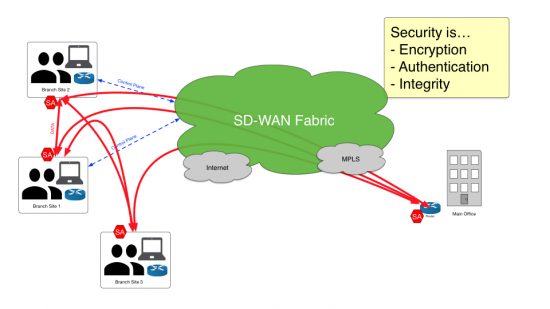One of hottest topics in networking is SD-WAN. Being the latest thing, organizations are not always clear on how, or why, to deploy a solution like SD-WAN.
What Is SDWAN?
Before we dive into deployment, let’s talk about what SD-WAN is. Software Defined Wide Area Networks (SD-WAN) are, essentially, “smart” networks or networks that adjust dynamically to your network conditions. Traditional WAN networks are generally made up of MPLS (Multi-Protocol Label Switching) and VPN. With these traditional networks, administrators have limited control over traffic flow because that control is through routing protocols. These protocols control routing by selecting the “best” path, and only switch to a redundant path when the “best” path is unavailable. Due to the nature of traditional routing protocols, monitoring and adapting to performance conditions experienced on each of your links is extremely limited – making formulating optimization options difficult.
Traditional WAN networks are generally made up of MPLS (Multi-Protocol Label Switching) and VPN. With these traditional networks, administrators have limited control over traffic flow because that control is through routing protocols. These protocols control routing by selecting the “best” path, and only switch to a redundant path when the “best” path is unavailable. Due to the nature of traditional routing protocols, monitoring and adapting to performance conditions experienced on each of your links is extremely limited – making formulating optimization options difficult.
With these types of infrastructures path optimization can be achieved through policy-based routing, however that type of routing is labor intensive and manual - as changes to what type of data takes which transport requires touching every node in the network.
By implementing SD-WAN, administrators deploy a policy (Control Plane) over the entire network. These policies monitor traffic flow and performance in real-time and allow the network to adapt to changing network conditions.
An SD-WAN architecture is provider and transport independent – meaning that the organization can use any type, or types, of transport and any provider – so long as the provider is connecting to a shared network (the Internet). For example, you can initially deploy SD-WAN on your existing network, regardless what WAN technology you currently leverage (i.e. MPLS, DMVPN, VPN).
Because SD-WAN leverages software to connect the network and make routing decisions, the circuit is less critical. It’s common for many organizations to install lower cost broadband connections and remove costly MPLS circuits. This is a key benefit to deploying SD-WAN. As an organization, you gain additional control and flexibility by not being locked in to a particular service provider for their MPLS technology.
Of course, this is an extremely simplified explanation of SD-WAN. If you are interested in a more technical version, check out our SDWAN Tech Talk on YouTube.
How Do I Implement SD-WAN?
There are multiple ways to procure and implement SD-WAN, however the two most common ways are to: buy it from a carrier or partner with a solution provider, like LookingPoint, to help design, procure and implement.
Using a Carrier
It is likely that your MPLS provider has SD-WAN capability. It is even likely that they will offer you the equipment in exchange for a multi-year contract.
Initially, using a carrier seems simple. All you need to do is sign a new contract and you’re locked in. By doing so, this ties you to the service provider – limiting your control of the network and the ability to selectively add and remove providers. This could also limit your administrative control to the moves, adds, and changes the provider chooses to make. Additionally, if you decided to leave the provider, you lose not just the service but the infrastructure as well.
Leveraging a Solution Provider
Many organizations leverage the expertise and experience of a solution provider when implementing SD-WAN.
The solution provider will work with you to design and build a network that meets your organizations needs. This provider can then ease you though the design, architecture, and implementation process. Following a proven process helps to reduce downtime and provides a seamless transition to SD-WAN. Many providers can also offer support/management of your network.
By using a solution provider, you own your network, giving you control to select the best transport options for each of your business locations.
The Bottom Line?
The bottom line is that a service provider wants to keep you in a long-term contract and maintain control of the systems it manages (i.e. your network), making it difficult to optimize the best transport options for each of your business locations. By leveraging a solution provider, you’re not locked into a single carrier and you own the equipment, allowing you to keep control of your network.
No matter what, you are going to pay for equipment, deployment services, and monthly transport fees - the question is do you want the flexibility to control and optimize your network?
The Destiny of Your Network
The ultimate questions to ask yourself when examining your SD-WAN options are:
- “How much control do I want over my network?”
- “Do I want to be locked in to a single carrier?”
- “Do I want the flexibility to be able to adjust my network to suit my needs?”
- “Do I want the best carrier options for each of my business locations?”
As always, the experts at LookingPoint are eager to answer any questions you may have. Feel free to post your question in the comments or call us directly.
Written By: Sean Barr, LookingPoint CEO




